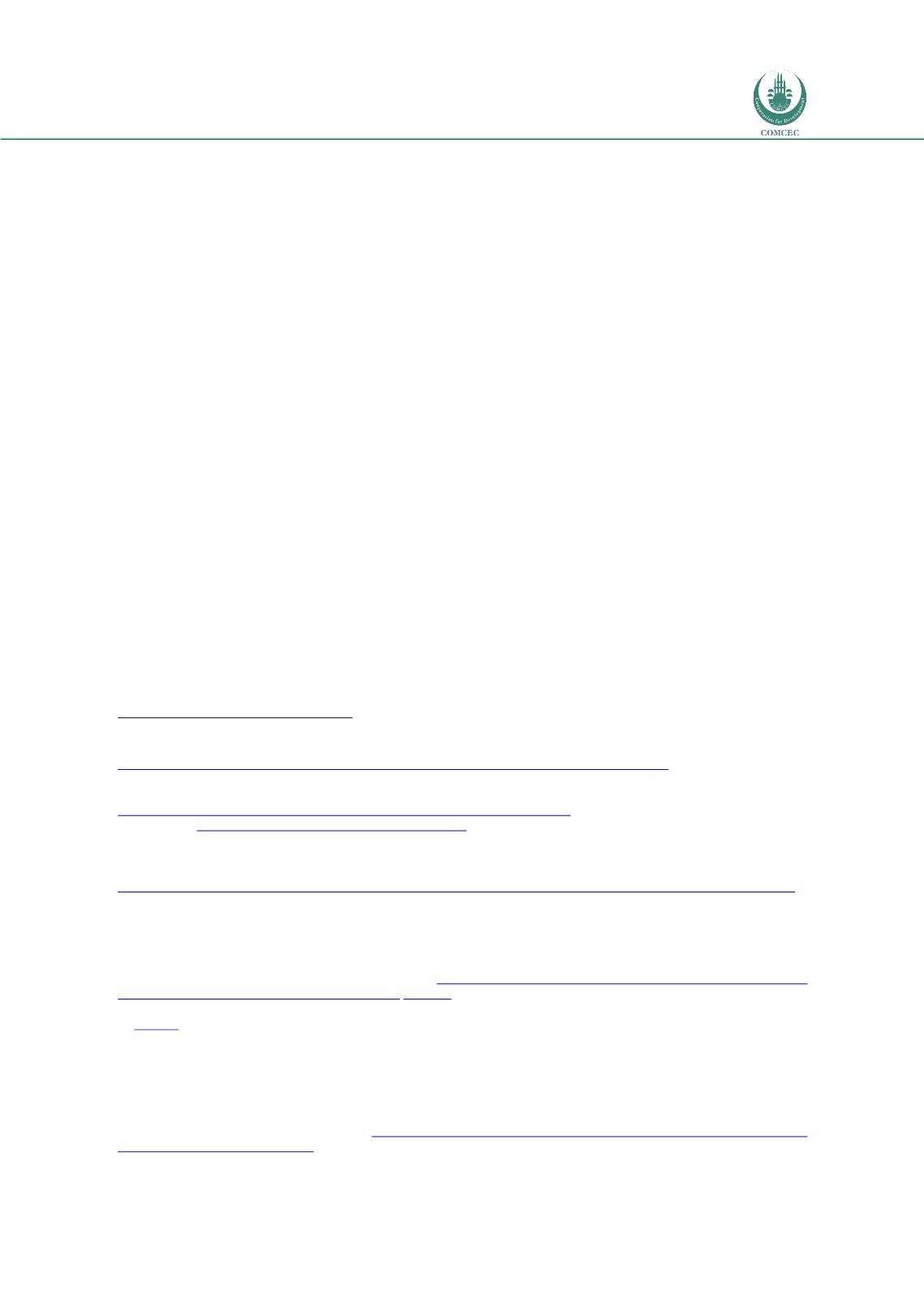

Forced Migration in the OIC Member Countries:
Policy Framework Adopted by Host Countries
51
250,000 civilians each year and 2.2 million people are considered severely food insecure
191
Furthermore, continued insecurity has made it difficult or dangerous for drought affected-
individuals to adapt by moving between provinces, forcing many to instead look for refuge
abroad.
192
Mixed flows of protracted displacement and seasonal migration
These multi-faceted push factors have also resulted in a diversity of migration flows in South
Central Asia, including emigration in search of humanitarian protection, seasonal economic
migration, and onward migration. The majority of the Afghan diaspora live in Pakistan and
Iran,
193
echoing long-existing cultural ties between the three countries. As of December 2015,
1.5 million Afghan refugees resided in Pakistan
194
and nearly 1 million lived in Iran, a large
majority of whom live in urban or semi-urban areas integrated with the local populations.
195
Many Afghans have grown up in displacement: in Pakistan, more than half of the Afghan
refugee population is under the age of 15, while another 20 percent are between the ages of
15 and 24.
196
While some Afghan refugees have lived their entire lives in exile, others’ migration
experiences have been cyclical or temporary in nature.
197
In mid-2009, it was estimated that,
on average, 40,000 people passed through official transit points between Afghanistan and
Pakistan daily.
198
As security and economic conditions declined, Afghans used traditional
labor migration routes to look for work, receive medical care, seek out safety, or visit
family.
199
Even as the region has seen increasing returns of Afghans from Iran and Pakistan,
labor migration continues to play a vital role due to Afghanistan’s persistent economic
difficulties.
200
According to the 2011-2012 National Risk and Vulnerability Assessment, 77
191
The total population of Afghanistan is about 32.5 million as of 2015, according to the World Bank. USAID, “Afghanistan -
Complex Emergency Fact Sheet #2, Fiscal Year (FY) 2016”, updated April 6, 2016, 4,
https://www.usaid.gov/sites/default/files/documents/1866/afghanistan_ce_fs02_04-06-2016.pdf ;UNOCHA,
Afghanistan:
Mid-Year Review
of
Financing,
Achievements
and
Response
Challenges
,
(Geneva:
UNOCHA,
August
18,
2015),
4,
https://docs.unocha.org/sites/dms/Afghanistan/afg_dashboard_quarter_two.pdf ;The World Bank, “Afghanistan,” accessed
July 27, 2016
, http://data.worldbank.org/country/afghanistan .192
Human Rights Watch, “Afghanistan: Events of 2015”
193
Nassim Majidi, Vivianne van der Vorst, and Christopher Foulkes, “Seeking Safety, Jobs, and More: Afghanistan’s Mixed
Flows
Test
Migration
Policies,”
Migration
Information
Source
,
February
25,
2016,
http://www.migrationpolicy.org/article/seeking-safety-jobs-and-more-afghanistans-mixed-flows-test-migration-policies .194
According to the Government of Pakistan, the number of Afghan refugees currently residing in Pakistan is estimated to
be over 2.5 million. This figure includes both registered and unregistered refugees, according to Government of Pakistan’s
sources.
195
63 percent of Afghan refugees in Pakistan, and almost all refugees in Iran, live in urban areas. European Resettlement
Network, “Afghan Refugees in Iran & Pakistan”; Saeed Kamali Denghan, “Afghan refugees in Iran being sent to fight and die
for Assad in Syria,”
The Guardian
, November 5, 2015,
http://www.theguardian.com/world/2015/nov/05/iran-recruits- afghan-refugees-fight-save-syrias-bashar-al-assad;UNHCR,
Solutions Strategy for Afghan Refugees Regional Overview, 2015-
2016 Update
(Geneva: UNHCR, 2015), 5-6.
196
UNHCR,
Solutions Strategy for Afghan Refugees Regional Overview
,5.
197
Asia-Pacific RCM Thematic Working Group on International Migration including Human Trafficking,
Situation Report on
Migration in South and South-west Asia
, (Asia-Pacific RCM Thematic Working Group on International Migration including
Human Trafficking, 2012), 26.
198
Majidi, van der Vorst, and Foulkes, “Seeking Safety, Jobs, and More”
199
Ibid.
200
Belquis Ahmadi and Sadaf Lakhani, “The Forced Return of Afghan Refugees and Implications for Stability,”
United States
Institute of Peace
, updated January 13, 201
6 http://www.usip.org/publications/2016/01/13/the-forced-return-of-afghan- refugees-and-implications-stability ;Majidi, van der Vorst, and Foulkes, “Seeking Safety, Jobs, and More.”
















